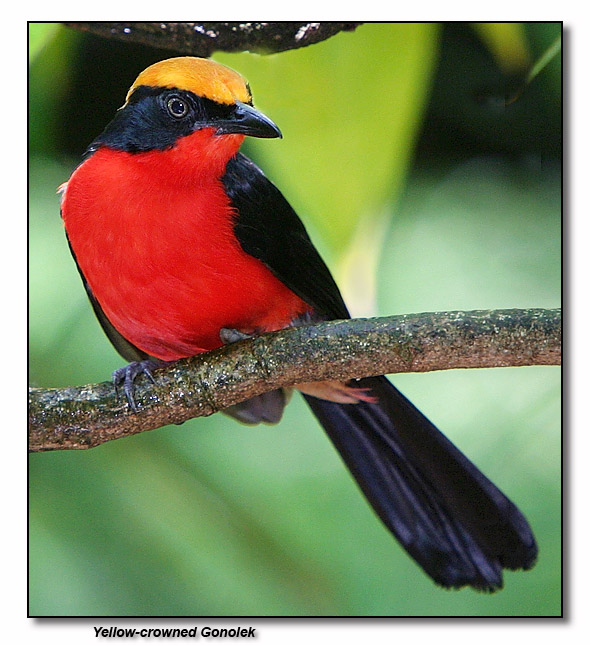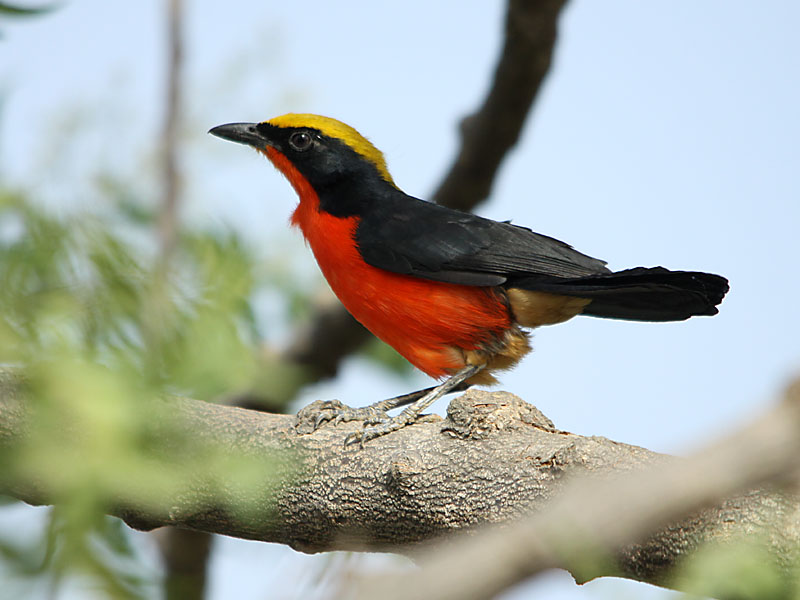
Laniarius barbarus
SUBFAMILY
Malaconotinae
TAXONOMY
Lanius barbarus Linnaeus, 1766, Senegal. Two races; slight differences
mainly affecting coloration of crown and nape.
OTHER COMMON NAMES
French: Gonolek de Barbarie; German: Goldscheitelwьrger;
Spanish: Gonolek Comъn.
PHYSICAL CHARACTERISTICS
9.0–9.8 in (23–25 cm); on average 1.7 oz (49 g). A robust, relatively
large, and brightly colored species. The similar sexes
have black upperparts contrasting with a golden crown, brown
eyes, and vermilion red underparts. Juveniles are similar, but
have duller upperparts and buffy underparts with heavy dark
barring. Race helenae has a deeper reddish crown.
DISTRIBUTION
Western Africa from southern Mauritania to northern
Cameroon. Helenae is confined to coastal areas in Cameroon.
HABITAT
Dense, woody undergrowth in savannas; the Sierra Leone race
inhabits mangroves.
BEHAVIOR
Occurs singly or in pairs. Spends much time in low vegetation
and on the ground, but may also look for prey on small
branches up to about 16 ft (5 m). Its flight is short and appears
heavy. More often heard than seen; produces remarkable duets
that sound as if they were produced by a single bird. Sedentary
as far as known.
FEEDING ECOLOGY AND DIET
Arthropods, mainly insects and particularly caterpillars and
grasshoppers. Said to predate on birds’ nests.
REPRODUCTIVE BIOLOGY
Monogamous and territorial. Few precise data available. The
nest is hidden relatively low, between 4.9 and 14.8 ft (1.5–4.5
m) in a dense bush or a small tree. It receives two, or more
rarely three, eggs. Eggs may be laid at any time of the year.
CONSERVATION STATUS
Not threatened. The precise status of the Sierra Leone race
might require further investigations.
SIGNIFICANCE TO HUMANS
None known.
Other popular Animals
Photo Gallery of - Yellow-crowned gonolek




 Animalia Life
Animalia Life